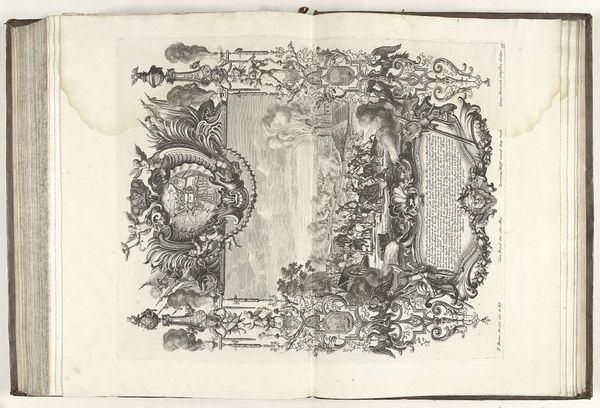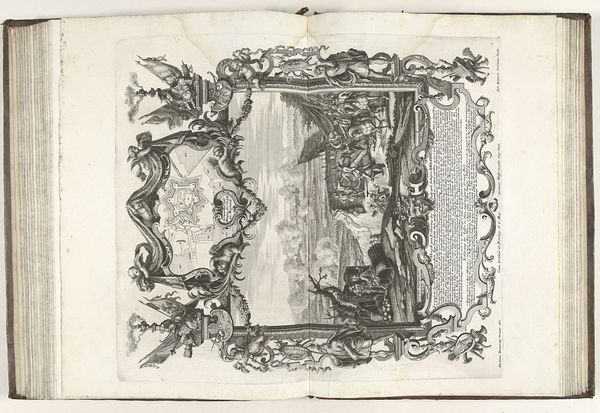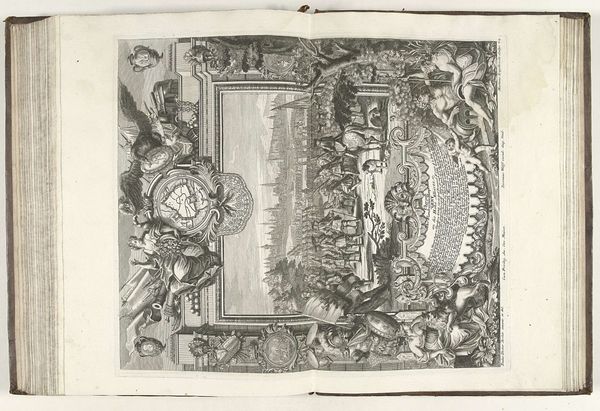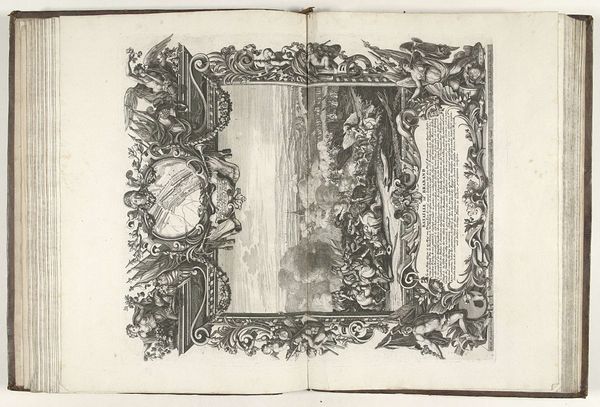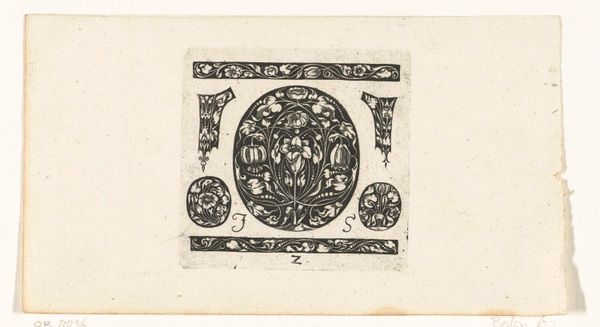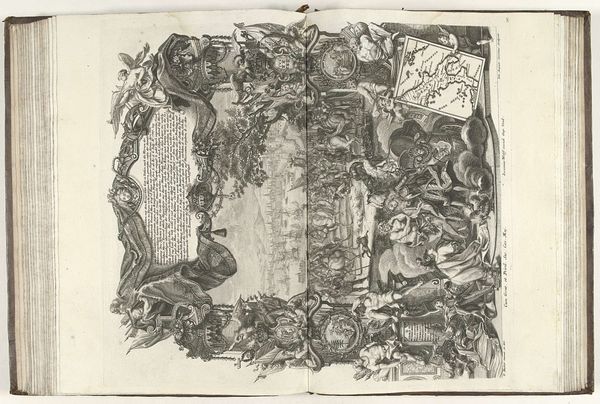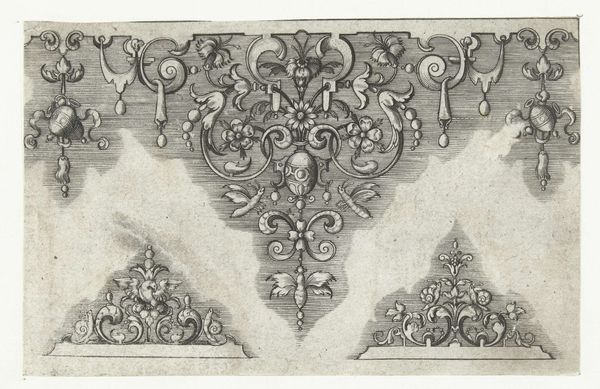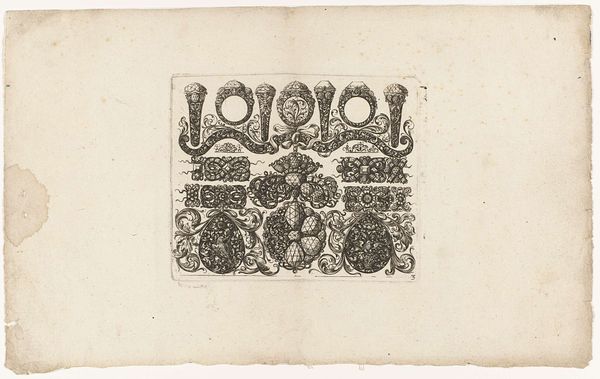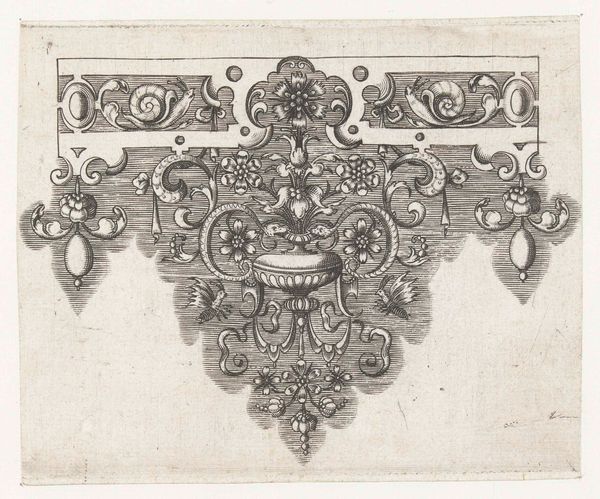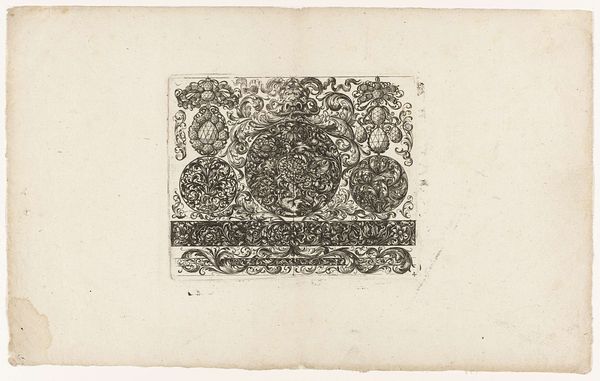
print, engraving
#
narrative-art
#
baroque
#
pen drawing
# print
#
line
#
history-painting
#
engraving
Dimensions: height 482 mm, width 368 mm
Copyright: Rijks Museum: Open Domain
Editor: Here we have Johann August Corvinus's "Verovering van Susa, 1707", created sometime between 1712 and 1715. It's an engraving, a print of some sort. I'm immediately drawn to how busy it is; so many details packed into a relatively small space. How should we approach such a dense image? Curator: Let's consider the materiality. It's a print. Think about what that means: mass production, dissemination, a product intended for a wide audience, not the elite few who could afford original paintings. Editor: So it's less about artistic genius and more about the accessibility of information, or even propaganda? Curator: Precisely. Look at the subject – a military conquest. Prints like this one functioned as visual news reports, shaping public opinion, fostering national pride. The act of engraving itself – the repetitive labor involved – speaks to the mechanization of image-making and the industrialization of warfare. The Baroque style lends a theatrical flourish to what is essentially a manufactured scene. What social function do you think an artwork like this may have played for a society that embraced it? Editor: Well, by reproducing and selling images of victorious conquests, like the "Verovering van Susa," it would create kind of nationalistic fervor, a market almost, and I see how it connects labor and materials to shape meaning. Curator: Exactly. These aren't just images; they're commodities reflecting power structures and the mechanisms of their reinforcement through repetitive labor. It invites one to inspect the means through which such views of victory, dominance, and social roles get reinforced. Editor: I hadn’t considered it from that perspective. It’s like deconstructing the idea of heroism by focusing on the nuts and bolts, literally and figuratively. Curator: Indeed, it forces us to consider not only the "what" but the "how" and "why" of artistic production and consumption, especially as it relates to larger socio-political frameworks. Editor: It seems analyzing art with a focus on materials gives us a tool to peel back the layers to reveal the motivations behind what’s produced.
Comments
No comments
Be the first to comment and join the conversation on the ultimate creative platform.
